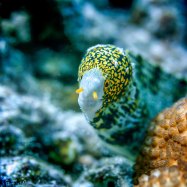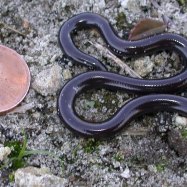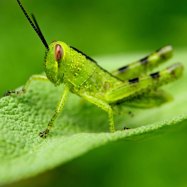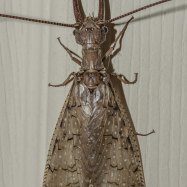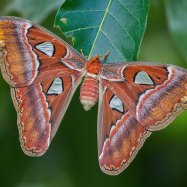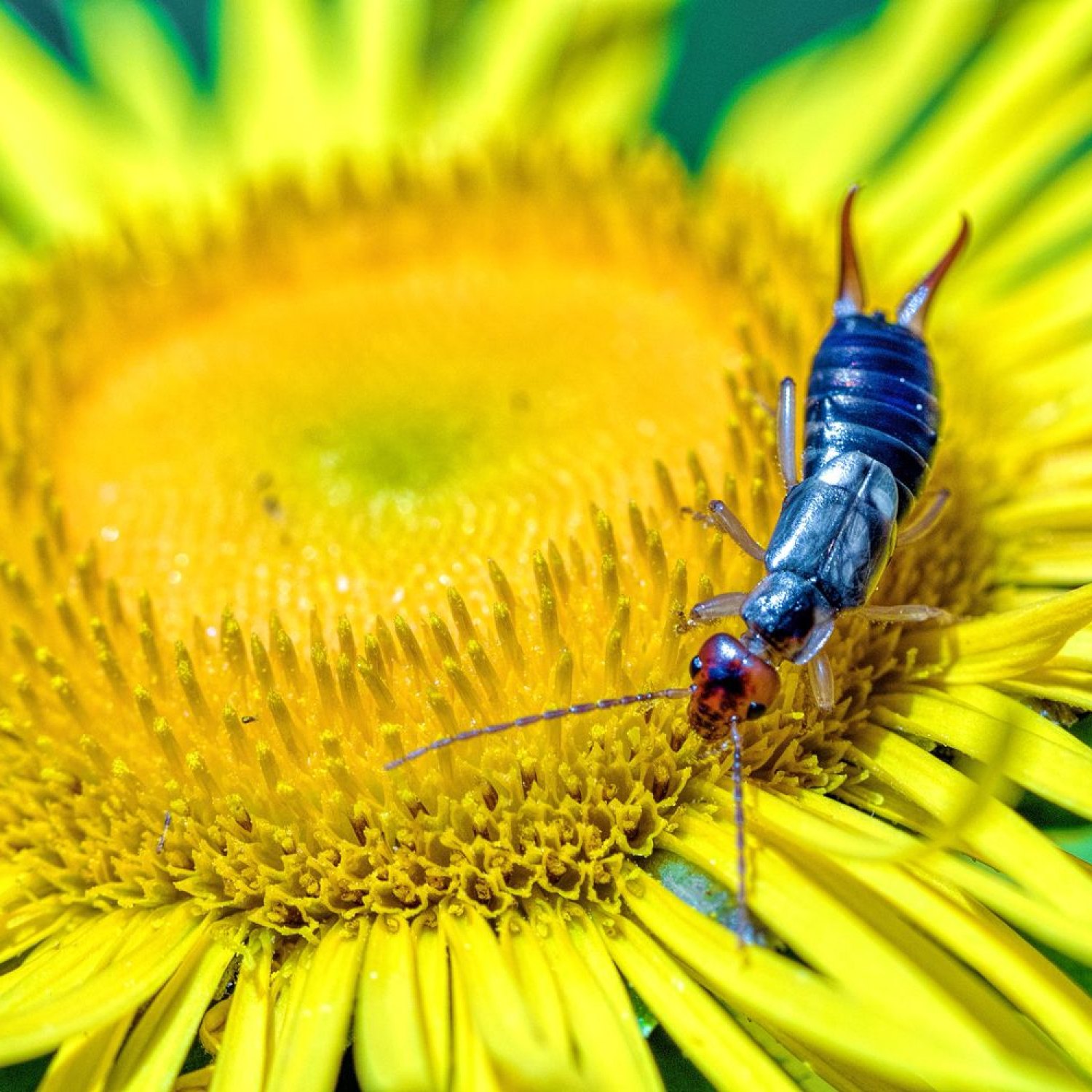
Earwig
Most earwigs range in size from 5 to 25 millimeters (0.2 to 1 inch) in length. The largest species, the giant earwig (Labidura herculeana), can reach up to 50 millimeters (2 inches) in length.
Earwigs may have a scary-sounding name, but these fascinating insects are harmless to humans. Most range from 5-25mm in size, but the giant earwig can grow up to 50mm! With a distinctive forceps-like cerci at the end of their abdomens, these insects can be found all around the world and have a unique body shape with two pairs of wings. #EarwigFacts #Animals #Forficulidae
Animal Details Summary:
Common Name: Earwig
Kingdom: Animalia
Habitat: Earwigs can be found in a variety of habitats, including gardens, forests, meadows, and urban areas. They prefer moist environments and can often be found hiding under bark, rocks, or in decaying wood.
The Fascinating World of Earwigs: From Tiny Pincers to Global Distribution
When we think of insects, we may picture buzzing bees, colorful butterflies, or creepy crawlers like spiders. But, there is one insect that often goes unnoticed, yet is found all over the world – the earwig. With its unique appearance and fascinating behaviors, the earwig deserves more recognition. So, let's delve into the intriguing world of earwigs and discover what makes them such an extraordinary species Earwig.Earwigs, scientifically known as Dermaptera, are a group of insects that belong to the phylum Arthropoda. They are a diverse group, with over 2,000 species found worldwide, except in extremely cold regions such as the Arctic and Antarctic. Earwigs are commonly found in gardens, forests, meadows, and even urban areas. They can adapt to various environments, making them a successful and widespread species.
The Anatomy of an Earwig
Earwigs have a distinct body shape, with elongated bodies and two pairs of wings. The front wings, called tegmina, are hardened and form protective covers for the hind wings, which are membranous and used for flight. When not in use, the wings fold like a fan and are hidden under the tegmina. This makes earwigs resemble beetles, but they are actually classified as insects.One of the most striking features of an earwig is its cerci, also known as forceps Eurasian Sparrowhawk. These are pincers located at the end of their abdomens and are used for defense, capturing prey, and mating. The shape and size of the cerci can differ among species, with some being short and stout while others are long and slender. The giant earwig (Labidura herculeana), the largest species of earwig, has the most impressive cerci, reaching up to 50 millimeters (2 inches) in length.
A Mother's Love and Unique Parenting Behavior
Earwigs have a unique parental behavior that sets them apart from other insects. Unlike most insect species, earwigs showcase maternal care and exhibit social behavior towards their offspring. Female earwigs stay with their eggs and young nymphs, providing protection and food until they reach adulthood.The mother earwig also displays a remarkable ability to recognize her young. Studies have shown that they can actually sniff out their own offspring from a group of young nymphs. Researchers believe that this behavior is essential for the survival of the young, as they have a better chance of survival when cared for and protected by their mothers.
The paternal behavior of male earwigs is also intriguing. They take part in parental care by guarding their young and even feeding them. In some species, male earwigs have been observed giving regurgitated food to their young, a behavior typically seen in birds.
A Diverse Diet
Earwigs are omnivores, meaning they eat both plant material and small insects. They will feast on a variety of plant matter such as leaves, flowers, fruits, and vegetables. In the garden, they can be beneficial as they feed on pests such as aphids, mites, and small insects. However, they can also damage plants by feeding on them.But, it's not just plants that make up their diet. Earwigs are also scavengers, feeding on decaying organic matter. This behavior is crucial for nutrient recycling in the ecosystem.
The Connection to the Writings of Charles Darwin
Earwigs have also played a role in science and literature throughout history. In fact, they were used in Charles Darwin's famous theory of evolution. During his trip to the Galapagos Islands, Darwin discovered a rare species of earwig with no wings, which he described in his notes. These wingless earwigs became critical evidence for his theories on evolution, as they showed how species could adapt and change over time.Furthermore, earwigs have also made appearances in literature. In Shakespeare's play, The Taming of the Shrew, a character is compared to a "gossamer-winged earwig." This reference highlights the delicate and fragile appearance of earwigs, with their thin membranous wings.
Cultural Beliefs and Superstitions
Earwigs have also been linked to various cultural beliefs and superstitions. Insects, in general, have long been associated with superstition, and earwigs are no exception. In some cultures, it is believed that earwigs can crawl into the ears of humans and lay eggs, thus causing illness or harm. However, this is just a myth, as earwigs do not lay eggs in human ears.In other cultures, earwigs are seen as good luck. It is believed that if an earwig falls onto someone, they will be blessed with wealth and prosperity. In parts of Europe, earwigs are considered a symbol of fertility and are often represented in art and literature as a good omen.
Earwigs: A Global Species with Common and Diverse Traits
As mentioned earlier, earwigs can be found all over the world, with the highest diversity found in tropical regions. Some common species include the European earwig (Forficula auricularia) and the common earwig (Labidura herculeana). These species share many similar characteristics, such as their body shape, feeding habits, and maternal care. However, there are also several unique traits that set them apart.The European earwig, also known as the common earwig, is one of the most widespread species, found in Europe, North America, South America, Asia, and Africa. It is also the species that is most often encountered by humans. This earwig is known for its distinctive forceps-like cerci, which can be up to 2 millimeters (0.08 inches) in length.
On the other hand, the giant earwig (Labidura herculeana), also known as the Saint Helena giant earwig, is found in the subtropical island of St. Helena, located in the South Atlantic Ocean. This species can grow up to 50 millimeters (2 inches) in length, making it the largest species of earwig. Unlike other earwig species, the giant earwig has no hind wings, making it unable to fly. Instead, it relies on its long cerci for defense and protection.
The Fascinating Habitat of Earwigs
Earwigs are a highly adaptable species, and as such, can be found in a variety of habitats. They are commonly found in areas with moisture, as they require a humid environment for survival. Some typical habitats for earwigs include gardens, forests, meadows, and even urban areas. They are often found hiding under rocks, bark, and decaying wood.The preferred habitat of earwigs can vary among species. For example, the common earwig (Forficula auricularia) is often found in gardens and urban areas, while the striped earwig (Sunius insignis) prefers forested areas with dense vegetation.
The Role of Earwigs in the Ecosystem
Earwigs, like all living organisms, play a vital role in maintaining balance in the ecosystem. As mentioned earlier, they are beneficial in gardens, as they feed on pests that can damage plants. Additionally, earwigs are also an essential food source for other animals. Birds, reptiles, and amphibians all prey on earwigs.In some regions, earwigs are also used in folk medicine. It is believed that they have anti-inflammatory and anti-bacterial properties and can be used to treat various ailments such as boils, ear infections, and toothaches.
The Future of Earwigs
Despite their abundance and widespread distribution, earwigs remain a largely understudied species. There is still much to be learned about these remarkable insects, their behaviors, and their role in the ecosystem. As humans continue to alter and impact the environment, it is crucial to understand how earwigs may be affected and how their populations may change in the future.In conclusion, earwigs are a fascinating and diverse group of insects that deserve more recognition. From their unique appearance to their complex behaviors, there is much to discover about these tiny creatures. So, the next time you encounter an earwig, take a moment to appreciate its incredible features and its important role in the natural world.

Earwig
Animal Details Earwig - Scientific Name: Dermaptera
- Category: Animals E
- Scientific Name: Dermaptera
- Common Name: Earwig
- Kingdom: Animalia
- Phylum: Arthropoda
- Class: Insecta
- Order: Dermaptera
- Family: Forficulidae
- Habitat: Earwigs can be found in a variety of habitats, including gardens, forests, meadows, and urban areas. They prefer moist environments and can often be found hiding under bark, rocks, or in decaying wood.
- Feeding Method: Earwigs are omnivorous, feeding on both plant material and small insects. They will eat leaves, flowers, fruits, and even other insects. Some species are also scavengers, feeding on decaying organic matter.
- Geographical Distribution: Earwigs are found worldwide, except in extremely cold regions such as the Arctic and Antarctic.
- Country of Origin: There are over 2,000 species of earwigs worldwide, with the highest diversity found in the tropics. Some common species include the European earwig (Forficula auricularia) and the common earwig (Forficula auricularia).
- Location: Earwigs can be found in many different locations around the world, including Europe, North America, South America, Asia, Africa, and Australia.
- Animal Coloration: Earwigs are typically dark brown or black, although some species can be light brown or reddish-brown. They have long, slender bodies with pincers at the end of their abdomens.
- Body Shape: Earwigs have elongated bodies with two pairs of wings. The front wings are hardened and form protective covers for the hind wings, which are membranous and used for flight. They have a distinctive forceps-like cerci at the end of their abdomens.
- Length: Most earwigs range in size from 5 to 25 millimeters (0.2 to 1 inch) in length. The largest species, the giant earwig (Labidura herculeana), can reach up to 50 millimeters (2 inches) in length.
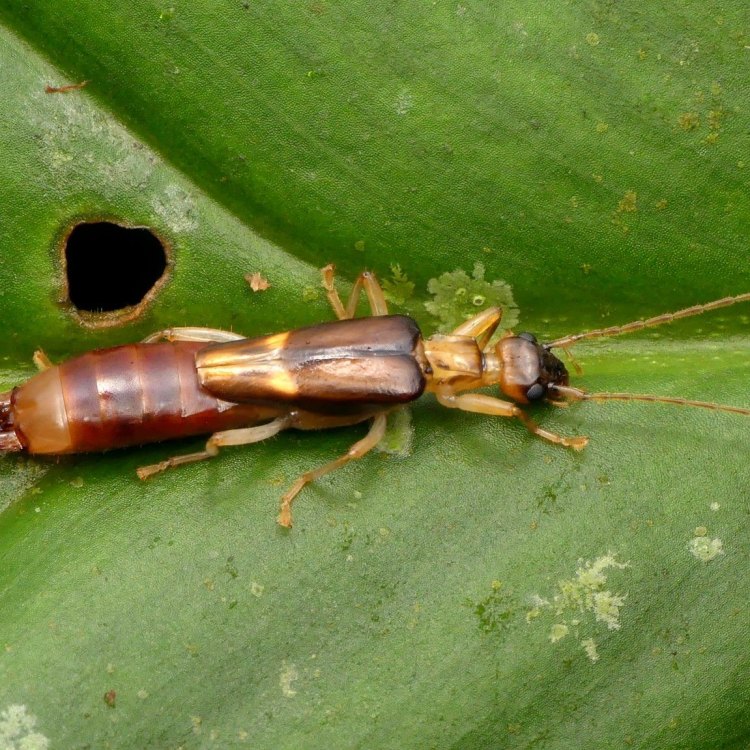
Earwig
- Adult Size: Earwigs reach their adult size within a few months. The size varies depending on the species, but most are between 5 and 25 millimeters (0.2 to 1 inch) in length.
- Average Lifespan: The average lifespan of an earwig is about one year, although some species can live longer.
- Reproduction: Earwigs reproduce sexually, with males and females mating to produce offspring. They have a unique mating behavior called mate guarding, where the male stays with the female after mating to prevent other males from mating with her.
- Reproductive Behavior: Earwigs are known for their maternal care. After mating, the female earwig lays eggs in an underground chamber and seals it with soil. She then stays with the eggs, protecting and cleaning them until they hatch. The female also provides food for the nymphs after they hatch.
- Sound or Call: Earwigs are not known for making sounds or calls. They primarily communicate using chemical signals.
- Migration Pattern: Earwigs do not migrate over long distances. They are generally sedentary and stay in the same area unless disturbed or searching for food.
- Social Groups: Earwigs are not known for being social insects. They are solitary creatures and typically only interact with each other during mating.
- Behavior: Earwigs are nocturnal insects, meaning they are most active at night. During the day, they hide in dark, damp places such as under rocks, bark, or in crevices. They are also known for their strong pincers, which they use for defense and capturing prey.
- Threats: Earwigs are not typically considered harmful to humans or crops. While they may occasionally feed on plants or damage fruits, they also eat other insects that can be pests in gardens. Some species of earwigs are considered beneficial for controlling populations of aphids and other pests.
- Conservation Status: Earwigs are not listed as endangered or threatened. They are a common and widespread insect species.
- Impact on Ecosystem: Earwigs play a role in the ecosystem as decomposers, feeding on decaying organic matter. They also help control populations of other insect pests in gardens and agricultural fields.
- Human Use: Earwigs do not have any significant direct uses for humans.
- Distinctive Features: The distinctive features of earwigs include their pincer-like cerci at the end of their abdomens, elongated bodies, and two pairs of wings.
- Interesting Facts: 1. Earwigs got their name from the myth that they crawl into people's ears while they sleep, although this is not true. 2. Some earwig species have been known to exhibit maternal care, with the females guarding and providing for their offspring. 3. Earwigs are able to release a foul-smelling odor as a defense mechanism. 4. Earwigs can regenerate their pincers if they are lost.
- Predator: Earwigs are predated upon by a variety of animals, including birds, spiders, frogs, and other insects.
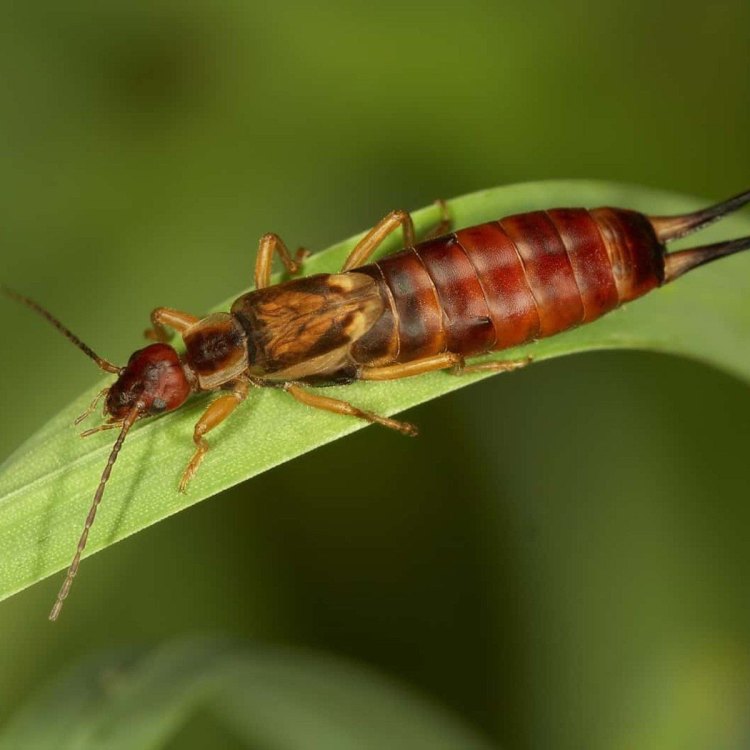
Dermaptera
The Fascinating World of Earwigs: What Makes These Insects Unique?
When you hear the word "earwig," you may think of a creepy-crawly bug that likes to crawl into people's ears while they sleep. However, these insects have a lot more to offer than just their infamous name. Earwigs are fascinating creatures with interesting behaviors and distinctive features that make them stand out in the insect world. In this article, we will explore the unique characteristics of earwigs and their impact on the ecosystem PeaceOfAnimals.Com.The Basics: Size, Lifespan, and Reproduction
Earwigs, also known as Dermaptera, are insects that belong to the order Dermaptera. There are over 2,000 species of earwigs worldwide, and they can be found in almost every part of the world. These insects typically reach their adult size within a few months and can vary in size depending on the species. Most earwigs are between 5 and 25 millimeters (0.2 to 1 inch) in length.The average lifespan of an earwig is about one year, although some species can live longer. Earwigs reproduce sexually, with males and females mating to produce offspring. They have a unique mating behavior called mate guarding, where the male stays with the female after mating to prevent other males from mating with her. This behavior ensures successful fertilization and increases the chances of the male's genes being passed on to the next generation Elephant Beetle.
Maternal Care: A Distinctive Feature of Earwigs
Earwigs are known for their maternal care, which is a unique behavior among insects. After mating, the female earwig lays eggs in an underground chamber and seals it with soil. She then stays with the eggs, protecting and cleaning them until they hatch. This parental care continues even after the eggs hatch, with the female providing food for the nymphs. This behavior is crucial for the survival of the offspring as it increases their chances of survival.Communication and Migration Patterns
Earwigs are not known for making sounds or calls. They primarily communicate using chemical signals, such as pheromones, to attract mates or warn other earwigs of potential danger. These insects do not migrate over long distances and are generally sedentary. They stay in the same area unless disturbed or searching for food.Behavior and Defense Mechanisms
Earwigs are nocturnal insects, meaning they are most active at night. During the day, they hide in dark, damp places such as under rocks, bark, or in crevices. They are also known for their strong pincers, which they use for defense and capturing prey. These pincers can also help them climb and hold on to surfaces.Interestingly, earwigs can release a foul-smelling odor as a defense mechanism when they feel threatened. This odor acts as a deterrent to potential predators. Earwigs can also regenerate their pincers if they are lost, making them even more resilient.
Impact on the Ecosystem and Human Use
Earwigs play a crucial role in the ecosystem as decomposers, feeding on decaying organic matter. They help break down dead plants and animals, returning important nutrients to the soil. Additionally, earwigs are considered beneficial insects in gardens and agricultural fields as they eat other pests, such as aphids. Some species of earwigs are also pollinators, aiding in the reproduction of plants.In terms of human use, earwigs do not have any significant direct uses. However, their contribution to controlling pest populations in gardens and fields benefits humans indirectly.
Interesting Facts and Myth Debunking
1. The myth that earwigs crawl into people's ears while they sleep is entirely false. There is no evidence to suggest that earwigs have any interest in entering human ears.2. Some earwig species have been known to exhibit maternal care, making them stand out among other insect species.
3. Earwigs are one of the few insect species that can release a foul-smelling odor as a defense mechanism.
4. Earwigs can regenerate their pincers if they are lost, making them resilient and adaptable to their environments.
Predators of Earwigs
Like most insects, earwigs have a variety of predators, including birds, spiders, frogs, and other insects. Birds, especially chickens, are known to feed on earwigs, making them useful in controlling earwig populations in gardens and fields.In Conclusion
Earwigs may have a bad reputation because of their name and appearance, but they are fascinating insects with unique characteristics. From their strong maternal care to their distinct pincer-like cerci and odor-releasing defense mechanisms, earwigs have evolved to thrive in their environments. They play a vital role in the ecosystem and are not considered a threat to humans or crops. Despite their small size, earwigs have proven to be resilient and adaptable, making them a fascinating species to study and learn about.
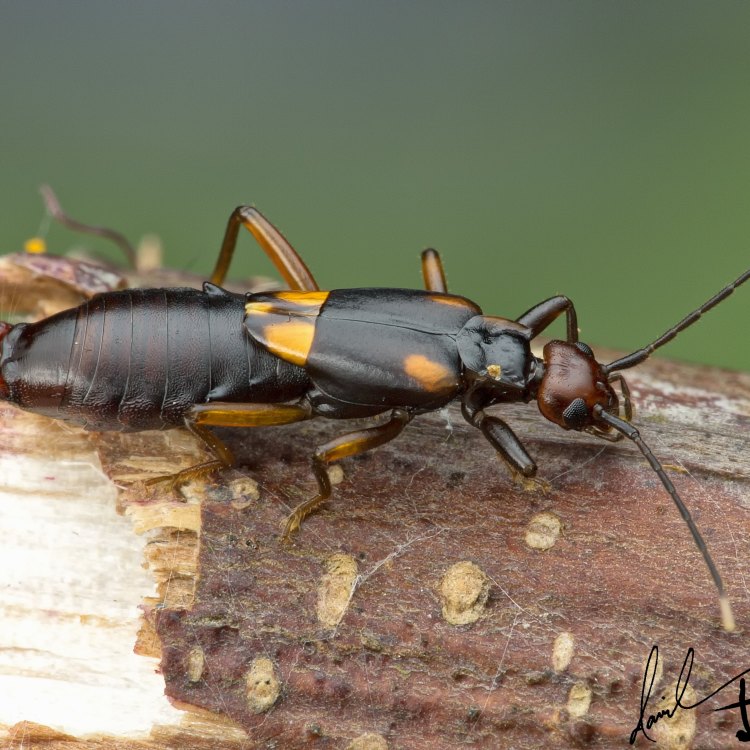
The Fascinating World of Earwigs: From Tiny Pincers to Global Distribution
Disclaimer: The content provided is for informational purposes only. We cannot guarantee the accuracy of the information on this page 100%. All information provided here may change without prior notice.


